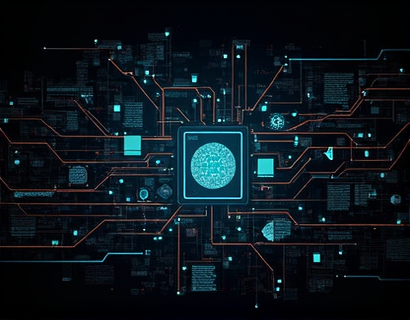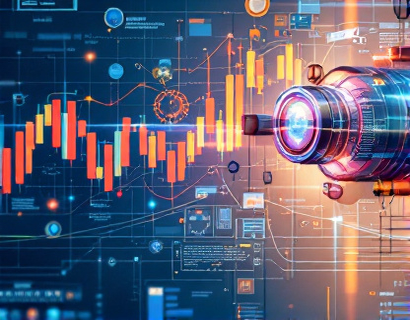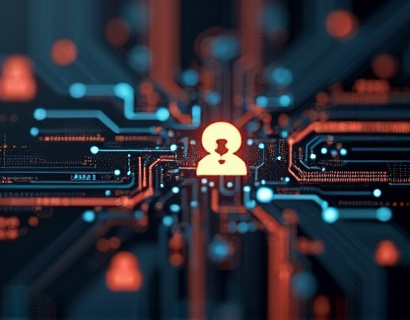Revolutionizing Digital Engagement: The Synergy of AI and Crypto
The intersection of artificial intelligence and cryptocurrency is ushering in a new era of digital engagement, transforming the way users interact with online platforms and services. This fusion of technologies is not only enhancing user experiences but also unlocking unprecedented opportunities in the tech landscape. For tech enthusiasts, digital innovators, and early adopters, understanding the dynamics of AI and crypto is crucial to navigating the future of digital interactions.
The integration of AI and crypto is redefining the boundaries of what is possible in the digital realm. AI's ability to process vast amounts of data, learn from patterns, and make intelligent decisions is complemented by crypto's decentralized and secure nature. Together, they are creating a more interactive, personalized, and secure online environment. This article delves into the various ways AI and crypto are converging to revolutionize digital engagement, offering insights into the technologies, applications, and future prospects of this transformative combination.
Understanding AI in the Crypto Ecosystem
Artificial intelligence plays a pivotal role in the crypto ecosystem by enhancing security, improving user experiences, and optimizing operations. One of the primary applications of AI in crypto is in security protocols. Machine learning algorithms can detect and prevent fraudulent activities by analyzing transaction patterns and identifying anomalies in real-time. This proactive approach to security is essential in a space where transactions are decentralized and often anonymous.
Beyond security, AI is revolutionizing the way users interact with crypto assets. Chatbots powered by natural language processing (NLP) are providing 24/7 customer support, answering queries, and guiding users through complex processes. These AI-driven assistants not only improve user satisfaction but also reduce operational costs for crypto platforms. Additionally, AI algorithms are being used to analyze market trends, predict price movements, and automate trading strategies, making crypto investing more accessible and efficient.
Enhancing User Experiences through Personalization
One of the most significant impacts of AI on the crypto space is the enhancement of user experiences through personalization. AI algorithms can analyze user behavior, preferences, and historical data to offer tailored recommendations and services. For instance, a crypto exchange can use AI to suggest optimal trading pairs based on a user's past trades and market conditions, thereby increasing the likelihood of successful transactions.
Personalization extends to the user interface as well. AI can adapt the layout and features of a crypto platform based on individual user habits, making the experience more intuitive and user-friendly. This level of customization not only improves user satisfaction but also increases engagement and retention. In a competitive market, the ability to provide a personalized experience can be a significant differentiator for crypto platforms.
Decentralized Applications and AI
Decentralized applications (dApps) are at the forefront of the crypto revolution, and AI is playing a crucial role in their development and functionality. dApps leverage blockchain technology to create decentralized, transparent, and secure applications. AI enhances these applications by providing intelligent services that traditional dApps cannot offer.
For example, AI-powered dApps can automate complex tasks such as smart contract execution, asset management, and risk assessment. These intelligent services not only streamline processes but also reduce the need for intermediaries, lowering costs and increasing efficiency. Moreover, AI can enhance the security of dApps by continuously monitoring for vulnerabilities and implementing real-time safeguards.
Another exciting application is the use of AI in decentralized finance (DeFi). AI algorithms can optimize lending and borrowing processes, manage liquidity, and predict market fluctuations, providing users with more robust and reliable financial tools. This synergy between AI and DeFi is paving the way for a more inclusive and accessible financial ecosystem.
Crypto and AI in Gaming and Entertainment
The gaming and entertainment industries are also witnessing a transformative impact from the combination of AI and crypto. Crypto-based gaming platforms are using AI to create more immersive and dynamic gaming experiences. AI-driven non-playable characters (NPCs) can adapt to player behavior, making the game more challenging and engaging. Additionally, AI can generate procedural content, ensuring that each player's experience is unique and fresh.
In the realm of digital collectibles and virtual assets, AI is enhancing the creation and management of NFTs (non-fungible tokens). AI algorithms can generate unique digital art, music, and other assets, adding value and authenticity to these virtual items. Moreover, AI can help in the verification and authentication of NFTs, ensuring their scarcity and provenance.
The integration of AI and crypto in gaming and entertainment is not only enhancing user experiences but also opening new revenue streams for creators and platforms. Tokenized rewards, decentralized marketplaces, and community-driven projects are becoming increasingly common, fostering a more interactive and rewarding environment for users.
Challenges and Considerations
While the convergence of AI and crypto offers numerous benefits, it also presents several challenges that need to be addressed. One of the primary concerns is regulatory compliance. The crypto space is still navigating a complex web of regulations, and the introduction of AI adds another layer of complexity. Ensuring that AI-driven crypto applications comply with local and international regulations is crucial to avoid legal issues and maintain user trust.
Another challenge is the technical integration of AI and crypto systems. Both technologies operate on different paradigms, and seamlessly integrating them requires sophisticated engineering solutions. Developers must ensure that AI algorithms can effectively interact with blockchain networks, handling issues such as latency, scalability, and interoperability.
Privacy and data security are also critical considerations. While AI can enhance security, it also requires access to large amounts of data, raising concerns about user privacy. Implementing robust data protection measures and transparent data usage policies is essential to build and maintain user confidence in AI-powered crypto platforms.
Future Prospects and Innovations
Looking ahead, the future of AI and crypto is promising, with numerous innovations on the horizon. One area of excitement is the development of AI-driven blockchain optimization tools. These tools can analyze blockchain performance, identify bottlenecks, and propose solutions to improve transaction speeds and reduce costs. This will be crucial for the widespread adoption of blockchain technology in various industries.
Another promising development is the integration of AI with quantum computing. Quantum computers have the potential to solve complex problems that are currently infeasible for classical computers. When combined with AI, quantum computing could revolutionize crypto security, optimization, and data processing, opening up new possibilities for decentralized systems.
Furthermore, the rise of AI-powered virtual assistants and virtual reality (VR) platforms is set to transform the way users interact with crypto. Imagine attending virtual crypto conferences, participating in immersive trading simulations, or engaging in social crypto experiences all from the comfort of your home. The convergence of AI, crypto, and VR is paving the way for a more interactive and accessible digital world.
In conclusion, the fusion of AI and crypto is revolutionizing digital engagement, offering enhanced user experiences, increased security, and new opportunities for innovation. As these technologies continue to evolve, their impact on the tech landscape will only grow, shaping the future of how we interact with digital platforms and services. For those interested in staying ahead of the curve, understanding and embracing this synergy is essential.










































